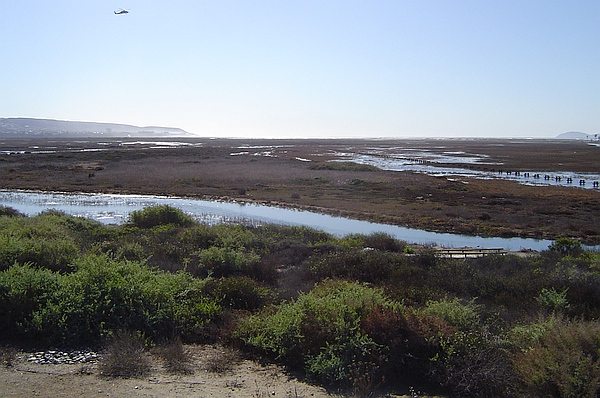The Tijuana River Estuary, Southern California’s only National Estuarine Research Reserve (NERR) and a beloved San Diego recreational destination for decades, may be forced to shut its doors if President Trump’s proposed $250 million in cuts to National Oceanic and Atmospheric Administration (NOAA) grants and programs are enacted.
The Tijuana River NERR in Imperial Beach is one of 29 National Estuarine Research Reserves (NERRs) that protect 1.3 million acres of precious coastal and estuarine lands across the country and depend on NOAA funding and programmatic support for coastal and marine management, research, training and education. The President’s proposal to dramatically cut funding to NOAA would mean the elimination of the NERR program and the loss of jobs and leveraged funds for this critical environmental resource in our community.
“While these budget decisions are being made at the national level, their impact will be significant right here in San Diego’s own backyard,” said Friends of San Diego Wildlife Refuges President George Dowden. “States, communities and people depend on estuaries like the Tijuana River NERR to protect us against flooding, keep water clean, create and sustain jobs, support fish and wildlife habitats and offer quality outdoor recreation opportunities. The time to act is now to protect this critical work, both locally and nationally.”
The Friends of San Diego Wildlife Refuges have partnered with a number local nonprofit organizations, including the Audubon Society, Surfrider, Coastkeeper, Los Penasquitos Lagoon Foundation and many more, to generate awareness and community support for the Tijuana River Estuary and other NERRs threatened by the proposed budget cuts to NOAA.
Light-footed Ridgeways rails in estuary settingCommunity Calls to Action:
All members of the San Diego community, particularly educators and academic institutions who have directly benefited from the reserves, are urged to call and write their representatives in Congress immediately to urge them to reject these severe cuts to critical NOAA funding.
This month is the time when the Appropriation Committees will meet to develop the 2018 budget, first the House then the Senate. So, this is really the critical time for folks to contact their Senators and Congress people.
It is worth noting that Congressman Juan Vargas was the first person to sign the “Dear Colleagues” letter of support for this effort. The deadline to sign that letter is this Friday, May 5.
The public is also encouraged to take to social media to communicate the importance of Reserve-based educational programs and experiences. A variety of videos, photos, maps and information about the impact of reserves can be found on the National Estuarine Research Reserve Association (NERRA) website at http://www.nerra.org/my-reserve-our-coasts
Local Impact of the Tijuana River NERR:
In 2016 alone, the Tijuana River NERR:
Hosted over 75,600 visitors
Offered over 2,000 contact hours of science-based training on coastal management issues and reached over 1,600 local students
Captured and cleaned approximately 40,000 cubic yards of sediment and solid waste flowing in the Tijuana River, protecting our oceans and beaches from pollution.
Provided refuge to over 370 bird species while protecting the nesting ground for six species of birds that are designated Threatened or Endangered.
In California, 98 percent of federal funding to the NERRs from NOAA goes out the door to local communities. Reserve research, education and stewardship amplify the impact from this federal investment. At the Tijuana River Reserve, the NOAA investment is matched by state, local and other federal dollars at over two times the amount contributed by NOAA. If NOAA’s budget is cut, these matching sources would likely disappear.
View from behind of two young children sitting looking into the Tijuana estuary Why Reserves and Estuaries Matter.
Nationwide, Reserves protect estuaries. Healthy estuaries defend against property and industry loss in disasters, sustain businesses, support recreational activities and improve water quality. Reserves reach half a million students, educators and visitors each year and decision-makers from approximately 1,100 cities and towns through training and technical assistance.
They maintain more than 110 water quality stations and 30 weather stations that collect real-time data to manage hazardous spills, shellfish industry operations and emergency response to storm surge and flooding. These measurable benefits to community and environment could all be lost.
More information about the Tijuana River Estuary can be found at http://trnerr.org/


